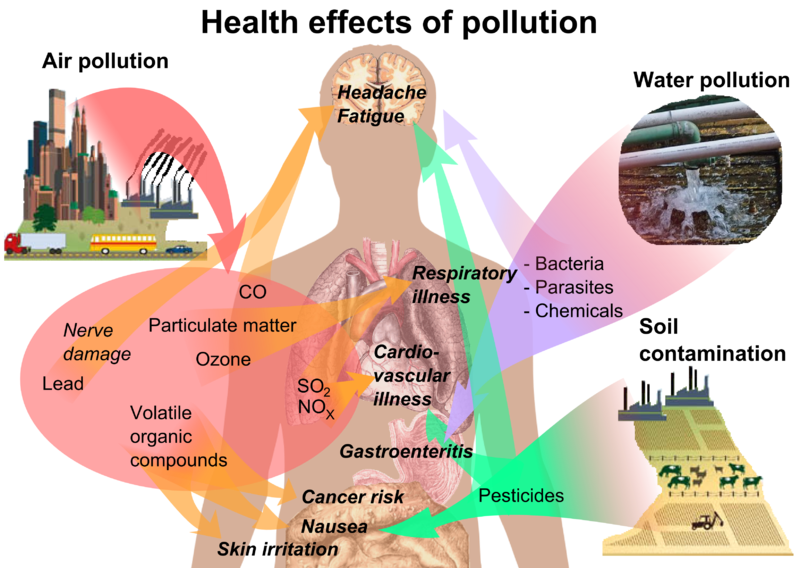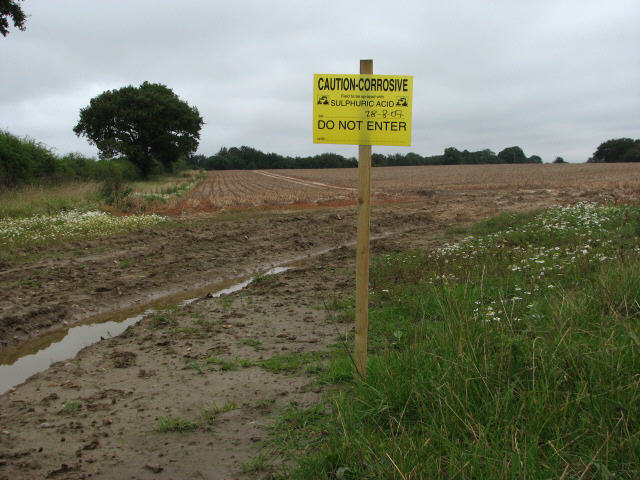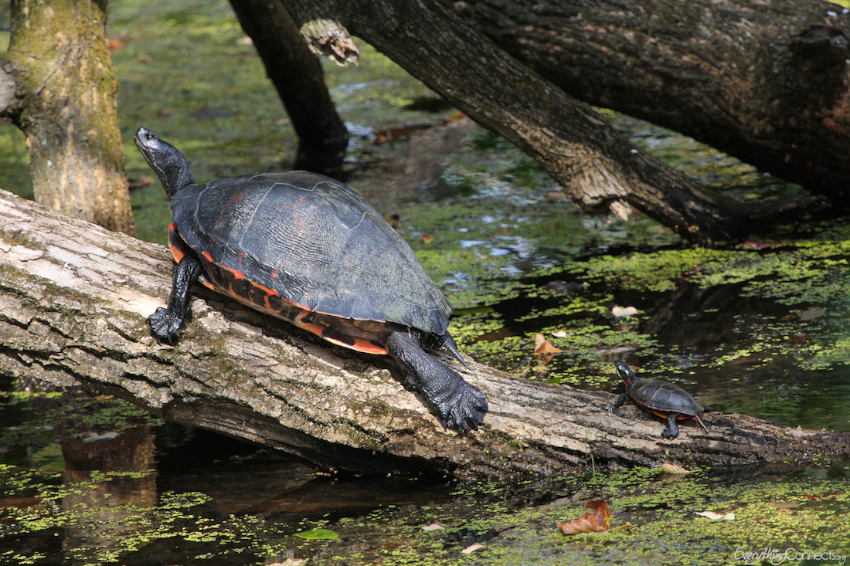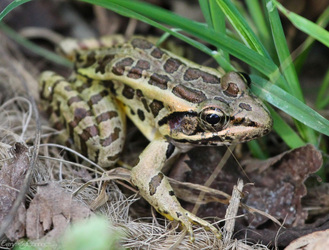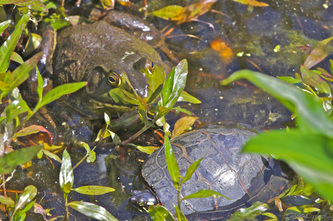Pesticides
|
Navigation
"For the first time in the history of the world, every human being is now subjected to contact with dangerous chemicals, from the moment of conception until death." ~Rachel Carson |
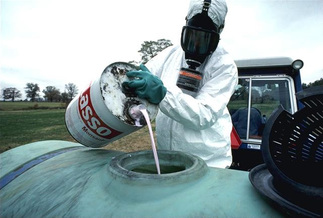 Monsanto herbcide to be sprayed on food crops. Source: USDA
Pesticides, which are categorized into four main chemicals: herbicides; fungicides; insecticides and bactericides; are chemical substances intended for preventing, destroying, deterring or mitigating pests, such as insects, plant pathogens, weeds, molluscs, various types of birds and mammals, roundworms and microbes that may otherwise cause nuisance, spread disease, be vectors for disease or destroy property, such as crops. Although the use of pesticides has its benefits, such as controlling or killing potential disease-causing organisms and insects, weeds and other pests, reducing yield losses and time savings to the producer and lowering food and fiber costs for the consumer, there are many drawbacks, such as the gradual erosion of soil, threat of toxicity to humans and other animals, increased pest resistance and the unintended killing of pests' natural enemies. Astonishingly, over 98% of sprayed insecticides and 95% of herbicides reach a destination other than their target species, including non-target species, air, water, bottom sediments, and food. According to the Stockholm Convention on Persistent Organic Pollutants, 9 of the 12 most dangerous and persistent organic chemicals are pesticides. According to Pesticide Action Network, "Each year, an estimated 1 billion pounds of pesticides are applied to U.S. farms, forests, lawns and golf courses. More than 17,000 pesticide products are currently on the market. Pesticide applicators, farmers and farm workers, and communities near farms are often most at risk, but studies by the Centers for Disease Control show that all of us carry pesticides in our bodies. Golf courses use pesticides heavily, so do some schools and parks. Consumers also face pesticide exposure through food and water residues. For instance, atrazine is found in 94% of U.S. drinking water tested by the USDA." As insects and weeds develop a resistance to pesticides, farmers are forced to use more, increasingly toxic chemicals to control these 'superweeds' and 'superbugs'. Known as the "pesticide trap," farmers get caught on the treadmill as they are forced to spend more on pesticides each year just to keep crop loss from pests at a standard rate. In the 1940s, U.S. farmers lost only 7% of their crops to pests. Since the 1980s, crop losses to pests have increased to 13%, even though more pesticides are being used due to the increasing resistances of pesticides. Between 500 and 1,000 insect and weed species have developed pesticide resistance since 1945. According to PAN, there are alternatives to relying on pesticides: "There is another way. Agroecology is the science behind sustainable farming. This powerful approach combines scientific inquiry with place-based knowledge and experimentation, emphasizing approaches that are knowledge-intensive, low cost, ecologically sound and practical. Home use of pesticides — which on a per acre basis outpaces use on farms by a ratio of 10 to 1 — puts families across the North America at unnecessary risk. Alternatives are available to manage home, lawn and garden pests without toxic pesticides." Learn more.
|
Effects of Pesticides on Humans
"Pesticide exposure can cause a range of neurological health effects such as memory loss, loss of coordination, reduced speed of response to stimuli, reduced visual ability, altered or uncontrollable mood and general behavior, and reduced motor skills. These symptoms are often very subtle and may not be recognized by the medical community as a clinical effect. Other possible health effects include asthma, allergies, and hypersensitivity, and pesticide exposure is also linked with cancer, hormone disruption, and problems with reproduction and fetal development. Children are at greater risk from exposure to pesticides because of their small size: relative to their size, children eat, drink, and breathe more than adults. Their bodies and organs are growing rapidly, which also makes them more susceptible; in fact, children may be exposed to pesticides even while in the womb." ~Toxipedia |
Pesticides can cause a variety of adverse human health effects by entering the body through the skin, eyes, mouth and nose. According to the Global Healing Center, "Farmers and their families and other persons who use chemical pesticides regularly are at greatest risk for achieving toxic levels in their bodies. The danger is spread out to larger areas, as the pesticides are carried on the wind, leave residues on produce, remain inside produce and animals and run off into open water, contaminating public water supply as well as fish and other seafood." The health effects of pesticides can affect the nervous system, irritate the skin or eyes, affect the hormone or endocrine system in the body, may be carcinogenic, can lead to birth defects, such as women being several times more likely to give birth to children with autism, create up to 70% increased risk for Parkinson's disease, male infertility, tumors, genetic changes, blood and nerve disorders, endocrine disruption, and even coma or death. According to Beyond Pesticides, "The common diseases affecting the public’s health are all too well-known in the 21st century: asthma, autism and learning disabilities, birth defects and reproductive dysfunction, diabetes, Parkinson’s and Alzheimer’s diseases, and several types of cancer. Their connection to pesticide exposure continues to strengthen despite efforts to restrict individual chemical exposure, or mitigate chemical risks, using risk assessment-based policy." Children are most susceptible to the toxic effects of pesticides. The Natural Resource Defense Council has recorded a higher incidence of childhood leukemia, brain cancer and birth defects to children with early exposure to pesticides. According to the World Resources Institute, "Pesticide exposure has been implicated in cases of immune system suppression as well. A compromised immune system makes it more difficult to fight off infectious diseases, parasites, or tumors, and could increase the toll these threats exact on one’s health. This combination could be particularly significant in developing countries, where the population’s exposures to both pesticides and infectious agents may be high and their immune systems may already be compromised by other factors." Moreover, according to a study published in the journal Neurology, the combination of having a head injury and being exposed to the common pesticide or herbicide, paraquat, has been found to increase the risk of developing Parkinson's disease by three times (see also) and couples exposed to persistent organic pollutants, or toxic chemicals in the environment, took 20% longer to become pregnant (see also). According to Pesticide Action Center, "Research indicates that children exposed to pesticides either in utero, or during other critical periods face significant health risks including higher incidence of birth defects, neurodevelopmental delays & cognitive impairment, childhood brain cancers, Autism Spectrum Disorders (ASD), Attention-Deficit/Hyperactivity Disorder (AD/HD) and endocrine disruption." Even Monsanto's extremely diluted 'Roundup', which is one of the most popular and widely used herbicides in the US, can cause acute membrane damage, impairment of mitochondrial functions, and damage to DNA. Furthermore, research, based on data collected in New York and California from about 1,000 pregnant women and their babies, shows that babies exposed to high levels of common pesticides in the womb have lower I.Q. scores than their peers by the time they reach school age. Learn more.
|
According to a Rachel Carson Council study on the unintended economic consequences of pesticides, "The estimated pollination losses to food production from pesticides' effects on honey bees and wild bees is $200 million per year. Destruction by pesticides of the natural enemies of pests can cost an estimated $520 million per year in the U.S.. A conservative estimate of fish (6-14 million) killed per year by pesticides ranges from $24 to $56 million and the total number of wild birds killed by pesticides is estimated at 67 million and the value of this bird loss to pesticides is $2.1 billion annually." Learn more.
|
Air
Pesticides contribute to air pollution in the form of pesticide drift, which occurs when pesticides remain suspended in the air as particles and are carried by wind to other areas, potentially contaminating them. According to the California Department of Pesticide Regulation, "It isn’t limited to agricultural activities. Drift can occur when a neighbor sprays pesticides in his garden. It can even occur indoors. Air currents created by heating, cooling, and ventilation systems can pick up and spread pesticides you use in your house. Pesticide drift was originally thought to occur only when applications were not done properly, and pesticide drifted away from the target, harming people or property. As we learned more about how chemicals move through air, we found out that pesticides could drift whether or not those using the pesticides are following the rules." When pesticides are sprayed, either in agricultural fields or at home, they can drift and settle on playgrounds, porches, laundry, toys, pools, furniture and more. According to PAN, "Some of the most toxic pesticides in use in the U.S. today are also the most drift prone, and yet this common route of exposure remains largely invisible." Learn more.
|
Water
According to the U.S. Geological Survey, pesticides in the U.S. were found to pollute every stream and over 90% of wells sampled in a study and according to the USDA Natural Resources Conservation Service, pesticide residues have also been found in rain and groundwater. Pesticides can reach the water by drifting outside of the intended area when it is sprayed, leaching through the soil, being carried to the water as runoff, eroding soil or through spillage, which can cause plants to die, water to deoxygenate and fish to suffocate. According to USGS, "About 95 percent of the population relies upon ground water for drinking water. Before the mid-1970s, it was thought that soil acted as a protective filter that stopped pesticides from reaching ground water. Studies have now shown that this is not the case. Pesticides can reach water-bearing aquifers below ground from applications onto crop fields, seepage of contaminated surface water, accidental spills and leaks, improper disposal, and even through injection waste material into wells." Learn more.
|
Soil
According to the EPA, many of the chemicals used in pesticides are persistent soil contaminants, whose impacts may last for decades, adversely affecting soil conservation and reducing the biodiversity in the soil and soil quality. In the absence of these chemicals and in times of drought, organic farmers have been able to retain more organic matter and water in the soil, which has helped increase their yields 20-40% higher than their conventional counterparts. According to Toxics Action Center, "Pesticide use can damage agricultural land by harming beneficial insect species, soil microorganisms, and worms which naturally limit pest populations and maintain soil health; Weakening plant root systems and immune systems; Reducing concentrations of essential plant nutrients in the soil such nitrogen and phosphorous." Furthermore, pesticides in the soil can hinder the growth of large plants by affecting the nitrogen fixation process, which can lead to a large decline of crop yields. Learn more.
|
According to the most comprehensive analysis of world agriculture to date, pesticides are not necessary to feed the world.
Wildlife
Pesticides can inflict extremely widespread damage to the biosphere by eliminating food sources, which can cause animals to relocate, change their diet, or starve, and directly poisoning animals with pesticide residues that remain on food after spraying or in nearby areas shortly after spraying, which can travel up the food chain causing harm to birds when they eat insects and worms that have consumed pesticides. In the US, pesticides have poisoned more than 200 endangered and threatened species, including the California condor. Learn more.
"In recent studies of major rivers and streams, one or more pesticides were detected more than 90% of the time in water, in more than 80% of fish sampled, and in 33% of major aquifers. Significant fish and bird kills have resulted from the legal application of pesticides, with millions of fish and birds estimated to die from pesticide exposure each year." ~U.S. Fish and Wildlife Service
|
|
|
Penn State: Pesticide Safety Fact Sheet - Potential Health Effects of Pesticides
Your browser does not support viewing this document. Click here to download the document.
Seven of the most toxic chemical compounds know to man are approved for use as pesticides in the production of foods! Learn more.
|
Pesticide Action Network: Pesticides and the Loss of Biodiversity
Your browser does not support viewing this document. Click here to download the document.
|
|
Last Revised:11/20/13
Commenting Rules |


